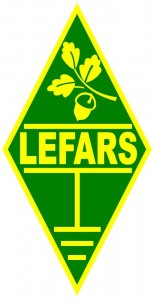Those who have a Notice of Variation (NoV) for 60m use this system to give meaningful signal reports on that band. It is not used much by amateurs on other bands but I have heard it used.
The 60m band is an experimental band for testing aerials and propagation, especially near vertical incidence skywave antennas. SINPO is very useful for these tests as it does convey much more than the RST one. If you are conducting tests then use the SINPO system to give an accurate reception of signals.
SINPO Rating
Your chance to give ‘marks-out-of-five’ on how badly degraded the signal is by interference, noise and propagation effects respectively. The definitions for the degradation effect are shown as Extreme (1), Severe (2), Moderate (3), Slight (4) and Nil (5). It might be helpful to consider that in the R S (T) reporting system we use R5 to report a perfectly readable signal, and R1 for a signal that is unusable. With SINPO all we are doing is splitting the “R” report into its individual components I, N and P:
| S | I | N | P | O | |
| Rating | Signal | Degrading effect of: | Overall | ||
| Scale | Strength | Interference | Noise | Propagation disturbance | Rating |
| 5 | Excellent | Nil | Nil | Nil | Excellent |
| 4 | Good | Slight | Slight | Slight | Good |
| 3 | Fair | Moderate | Moderate | Moderate | Fair |
| 2 | Poor | Severe | Severe | Severe | Poor |
| 1 | Barely audible | Extreme | Extreme | Extreme | Unusable |
- “I” stands for interference, or QRM. Think about this as a reading for the degrading effect of interference on the QSO, i.e. 5 for none, 1 for a lot. When giving the report you can think the same way as you do with the “R” report for R S (T) – for a signal with very heavy QRM you give it a report of 1, and a signal with little or no QRM gets a report of 5.
- “N” is for the degrading effects of noise, i.e. QRN. Again we can think about the report as 5 for none, 1 for a lot. Note that interference from a broad-band data transmission might sound like noise, so if you can do some checks to ensure that you gave correctly determined whether the apparent noise is indeed noise rather than QRM.
- “P” is a measure of propagation-related distortion such as fading, flutter or perhaps an aurora rasp on the signal. Again, it is seen as a measure of the degrading effect on the desired signal, also scoring 5 for none, 1 for a lot. This is perhaps the more difficult one on which to report, as on a strong signal the effects of QSB may be less noticeable with the good AGC systems in our rigs these days. Conversely it could be that you hear more pronounced fading from QRP stations and therefore give a different report for P between QRO and QRP stations.
- Finally, the “O” report is a measure of the extent to which all these factors contributed to the overall rating; 5 for excellent and 1 for unusable. O=1 is also used for “not heard”; when it is known that the station is transmitting on channel. SM.1135 has a useful set of tables to help the assessment of O. Table 3 below shows the assessment suggested for telephony transmissions:
| Overall rating | Operating Condition | Quality |
| 5. Excellent 4. Good |
Signal quality unaffected Signal quality slightly affected |
Commercial |
| 3. Fair | Signal quality seriously affected; channel usable by operators or by experienced subscribers | Marginally commercial |
| 2. Poor 1. Unusable |
Channel just usable by operators Channel unusable by operators |
Not commercial |
ITU SM.1135 SINPO Reporting Code for “overall” assessment of a telephony transmission. Source: ITU and RSGB
Hope this helps
73 John G0VEH (Email: g0veh@lefars.org.uk)

